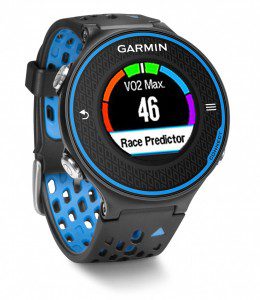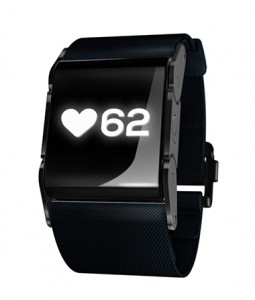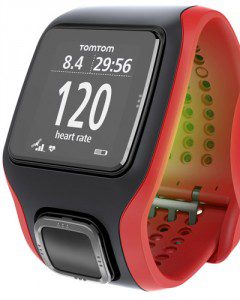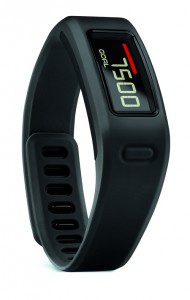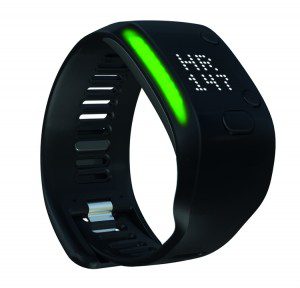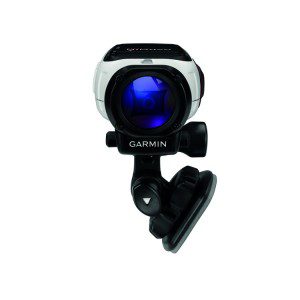Looking to treat yourself this Christmas? Look no further than our list of the 7 best running gadgets money can buy!
Garmin Forerunner 620, from £330
What is it? – This stylish GPS watch has a touch screen and a high-resolution colour display that keeps you up-to-date with your real time progress
Pros: As it’s extremely light, you can wear it away from running without breaking your wrist. The amount of data at your fingertips is something to be admired: the customisable workout display screens are a Garmin Hallmark, and up to four different screens can be set up with one to four slots of data. When combined with a heart rate monitor, it brings together key data points to estimate your VO2 max and even estimates recovery time.
Cons: The price could possibly put people off and the menu is quite fiddly at the start.
Value for money: Pricey but worth the money.
Nice touch: It records all of your PBs at distances from one mile to a marathon and even your longest run. Make sure you don’t use it on the bike!
Star rating: * * * * *
www.garmin.com
PulseOn Heart Rate Monitor, £179.99
What? A wireless heart rate monitor that tracks your vital signs from your wrist. Provides instant feedback on the run or synch with a smartphone for extra functionality
Pros: No need to wear a bulky chest strap. Simple to use and easy to set up. Pair with a phone to get all the really clever stuff like personalised fitness targets. Also measures speed, distance and calories burnt so no need for an additional GPS watch. Lightweight and comfortable to wear.
Cons: We found the side-mounted buttons a bit fiddly to press on the run. The display is fairly basic, giving you the option of just heart rate or elapsed time. And for skinny wrists, there’s a lot of strap!
Style: Minimalist, sleek and sophisticated, like the Knight Rider car for your wrist. The display is pure class and oh-so-understated.
Nice touch: Pair it with the software and the PulseOn will tell you how long it’ll take you to recover from your workout.
Star rating: ****
www.pulseon.com
TomTom Runner Cardio, £220
What it is? – A wrist-based based HRM and GPS watch that uses sensors to track the blood flow in the wrist that calculates your heart rate.
Pros: without doubt its simplicity is the best feature. Underneath the face of the watch there is four-way cursor on the strap where most of the input is done. The runner cardio is geared towards zone training with five levels of intensity, from sprinting to marathons to basic warm ups. It’s also waterproof up to 50m so its perfect for swimmers and those crazy triathletes out there.
Cons: The GPS takes an age to load, the watch itself is a bit chunky and the TomTom website is too archaic.
Value for money: the functionality justifies the steep price well.
Nice touch: Bluetooth syncing between the iOS app and the watch is very impressive.
Star rating: * * * *
www.tomtom.com
Garmin vívofit, £99.99
What is it? Activity tracker that counts steps, distance travelled, exercise time and calories burned, with all the data explained and visualised in the accompanying Connect app.
Pros: Unlike most activity trackers, the vívofit is powered by two coin cell batteries. This means it can go for up to a year without having to be recharged. That, and the fact that it can synch wirelessly to the Garmin Connect app, makes it easy to set up.
Cons: Display is not backlit (you’ll still be reaching for your phone to check the time in the middle of the night), and it’s just an LCD.
Value for money: As activity trackers go, it’s reasonably priced.
Nice touch: Does a good job of tracking sleep. It monitors your rest and lets you know, via your Connect page, your total sleeping time, along with restful sleep and any time you might have been thrashing around with the night terrors.
Star rating: ★★★★★
www.garmin.com
Adidas miCoach Fit smart, £199
What is it? A fitness tracker that monitors workout intensity, measuring heart-rate, distance, stride rate, pace and calories.
Pros: Unlike many watches, it monitors heart-rate response to physical activity – and then offers training advice. So it guides the user to train at the appropriate intensity. The soft, silicon strap, and the fact it weighs only 58g, makes it real comfy too.
Cons: Well, the price. Aimed at people looking to get into fitness, it may be too expensive for those starting out. Also, without a chest strap, its heart-rate readings might not be totally accurate.
Value for money: A quality product but on the pricey side.
Nice touch: The side lights up a certain colour to notify you which ‘zone’ you’re in. Very handy!
Star rating: ★★★★
www.adidas.co.uk
Garmin VIRB Elite
Design: For its first foray into the action camera market, Garmin has chosen a flat, almost nautical look, for the VIRB Elite. It looks like the kind of camera that would be at home on a deep-sea dive, perhaps headed by director James Cameron. First impressions aside, the VIRB Elite is a true 1080p HD camera that has a 1.4’’ Chroma display built in and a WideVü lens. Yet at 6.26oz, with the battery, it’s not as light as some of its competitors.
Getting started: Setting up the VIRB Elite is as simple as setting up an average digital camera. Stick in a memory card, and a battery, charge it up and you’re ready to start shooting (after some tinkering with the settings of course).
Features: Other than the lens and display, the VIRB Elite is packed full of features. It has Wi-Fi connectivity, allowing you to connect wirelessly with your smartphone or computer. It can also connect with other Garmin devices, like heart monitors and temperature sensors, allowing you to overlay extra data on your videos. You can also use Garmin products like the fenix, Oregon or Edge as remote controls.
Verdict:For its first attempt to break into the action camera scene, Garmin have produced a sturdy, feature-packed product. It’s a bit weighty and bulky to make any real impact on the market, and is more suited to helmet mounting than for use while running.
£349.99, www.garmin.com
GoPro Hero 3+ Black Edition
Design: Small, boxy and easy to manage, GoPro’s cameras are easily recognisable and it hasn’t changed the design for its latest and most powerful offering, the Hero 3+ Black. It’s 20 per cent smaller than previous models and looks like a rugged digital device. It’s a powerful Emmy Award-winning camera with video resolution up to 4K, an ultra-sharp fixed f/2.8 lens and it weighs in at a mere 4.8oz, with the housing attached.
Getting started:To get started, you’ll need a class ten or higher micro SD card. You’ll also need to check that the camera has got the latest software installed by heading over to gopro.com/update. After the camera is charged, you need to pop it into its protective case before you do any filming.
Features: Given the size of the Hero 3+, it’s amazing how much GoPro manage to pack into it. And it’s also good to see that the majority of its focus has gone into improving the quality of the video. Yes, it has Wi-Fi connectivity and it has a great companion app that acts, among other things, as a wireless remote control, but it also has an excellent auto low-light mode and boasts SuperView, an immersive wide angle perspective.
Verdict: GoPro continues to make its cameras smaller, stronger, more powerful, and generally better. It’s been a steady evolution since it first broke into the market, with the onus being firmly on improving the quality of the end product – the video you shoot. And, because of that, it’s still the best action camera out there.
£359.99, www.gopro.com

